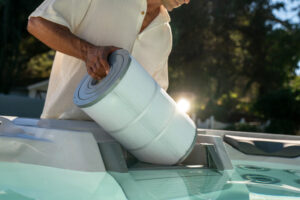Backyard Fire Safety – 6 Tips To Stay Safe With Your Fire Pit
During this time of year, the centerpiece of any outdoor living area is invariably the fire pit.
It’s where the family can go for a winter evening roundup, it’s where you invite your friends and relatives for a weekend garden party, and it’s always a place where great conversations are had while gazing into the mesmerizing and enchanting ribbons of flame.
Even if one or more members of the family are tested campers or former boy scouts, it is always a good idea to practice proper fire safety while setting up and tending to the active fire in your backyard.
In this article, we will discuss essential tips for maintaining backyard fire safety to enjoy a worry-free experience.
1. Placement: Furthest Distance and Clearance
The best place to begin when reviewing backyard fire safety is in placement. While it might mean a short walk away from your patio or back door, the best place for a fire pit is at least 25 feet from any structure.
That means your house, a fence, or your neighbors house. Additionally, do not position the pit anywhere underneath an awning, low hanging structure, or under low-hanging tree branches.
2. Avoid Flammable Materials
It is also important to remember to never place your fire pit over potentially flammable material like your grass. Pick an area that is clear of vegetation or build a simple pad of pavers, sand, or rocks.
This is a fire safety detail that you can even have fun with and design around as you can use different gardening materials to make the area around your fire pit more visually welcoming and attractive.
3. Choosing the Right Fire Pit
Next, consider how your fireplace is made and what it is made of. Thick and heavy rocks make great borders for fire pits but there are also a number of cast iron or steel pits available commercially that are equally as good at keeping the fire where you want it, in the pit.
Remember to always build or purchase fire pits that are at least 6 inches deep and 2-3 feet in diameter so that you have ample space to build and contain the flames.
4. Starting the Fire: Kindling and Firewood
Once you have the placement set and you are comfortable with the safety of the material used in building the pit, starting the fire is the next place where you want to take the most care. Use dry kindling organized uniformly at the center of the pit to start the fire and never use flammable liquids like lighter fluid or gasoline to get it started.
Stacking small logs or branches around kindling in a Lincoln log fashion is a great way to create a one-match fire starter. Always check wind direction and strength before starting your fire as you do not want flames or embers to blow into potentially flammable material or structures.
5. The Importance of Proper Extinguishing
When the party is over and it’s time to go to bed, the worst thing you can do is just leave the fire alone and let it go out on its own. Use water to thoroughly douse the flames and then a shovel to stir around the ash and reveal any hidden embers. Once you are confident that the flames are out, shovel the ash into a metal container with a lid.
Think the classic trash can that Oscar the Grouch lives in on Sesame Street. Once the ashes are in the can, let them sit for several days before disposing of them as they can retain heat for long periods of time. When it is time to dispose of the ashes, be sure not to put them into a flammable receptacle like a paper bag before throwing them away.
6. Emergency Preparedness and Responsible Behavior
As you go through these steps in preparing for a safe backyard fire pit, it is always a good idea to have an emergency plan in place in the event that things get out of hand. Make sure any children or young people are taught to stay safely away from flames and to never treat fire as something that should be played with.
And always respect local burn bans or wind advisories that are in effect in your area as they are put in place for your safety and that of your neighbors. As long as you are safe and follow these steps, there is no reason why every backyard fire experience should not be a positive one to remember.
Share this blog post!
Hours
Mon – Sat: 10:00 AM – 6:00 PM
Sun: 12:00 PM – 5:00 PM
Appointments: Anytime
© 2024 Imagine Backyard Living All rights reserved. Made with by IMP Digital







